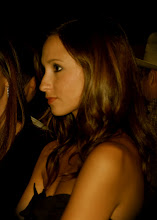Personally, I love monograms, and I'm always on the lookout for anything with the letter "G" on it. Unfortunately, I think a lot of people associate the word “monogram” with preppy sweaters, fussy bathrooms, vintage silverware. These days, monograms have gone so far beyond traditional linens and barware. Also, the traditional monogram, while still loved by many, has evolved to where anyone can find a monogram to fit their personal style. Whether it be a full monogram, or just an initial, decorating with monograms can add, well…a bit of personalization to your home.
*Monogrammed items also make great gifts!
Monogram Doormat ~ William Sonoma ~ $69.95
Monogram Candle ~ Anthropologie ~ $26
Jonathan Adler Letter Pillow ~ $98
Monogrammed Pillow ~ Ballard Designs ~ $22
Monogrammed Walnut Cutting Board ~ Frontgate ~ $199
Monogrammed Plates ~ Neiman Marcus ~ $100, set of four
Initial Napkin Rings ~ Neiman Marcus ~ $48, set of 4
Enter the Dabney Lee at Home Collection...or the Monogram Mecca as I like to call it. Here you will everything from coasters to file folders, all customizable. Below are a few of my favorites from the collection.
Salt & Pepper Shakers ~ Dabney Lee at Home ~ $40
Monogram Lucite Tray ~ Dabney Lee at Home ~ $120

Playing Cards ~ Dabney Lee at Home ~ $55 for two decks
Today I learned...The History of the Monogram:
The marking of linen was not done originally for decorative purposes. Marking was made solely for laundry identification on washday. Each item held the indelible ink mark or stitching of its household on one corner. The Royals had “linen maids”. In the countryside, the whole village participated in the commoners' washdays. The laundresses used to go down to the stream or river together. They would all work alongside each other and it was easy to mix up the household items amongst the workers.
Fine, wealthy families in Europe considered linens precious items, as they were frequently woven in the rarest of fabrics. It was also an opportunity to show off and to display each others linens. They would spread everything out on the meadow to dry. This would call attention to the abundance of household items and social position. Often items were stolen due to their value, so families began marking their linens. Later, commercial laundries were available and the markings kept everything in order.
The monogram evolved in the 19th century, as the French Kings and nobles began personalizing their linens with large symbols of crests and coat of arms. The beauty of the embroidery enhanced the household and confirmed their wealth. Soon thereafter, others followed suit and began imitating the royalty by having their own linens embroidered. This is how the embroidered monogram evolved.
In imitation of the Kings, the trousseau became popular in the 1800's. Monogrammed linen was richly symbolic in the trousseau, as this was their mark of family wealth. Bourgeois European society even set up “trousseau funds” to enable the poorest of girls to have some household linen when they married. The trousseau was always brought by the bride and remained her property in case of widowhood or remarriage. via Monogram, Inc.











Those cards make me want to pick up poker as a hobby. fine as wine in the summertime!
ReplyDeleteLOVED the history lesson. merci beau coup!
i love monograms, and i love that you researched the history on them and included it in your post! this is really great--do you mind if i link to this post in the future??
ReplyDeleteThank you both! And Dayka, feel free to link away!
ReplyDelete